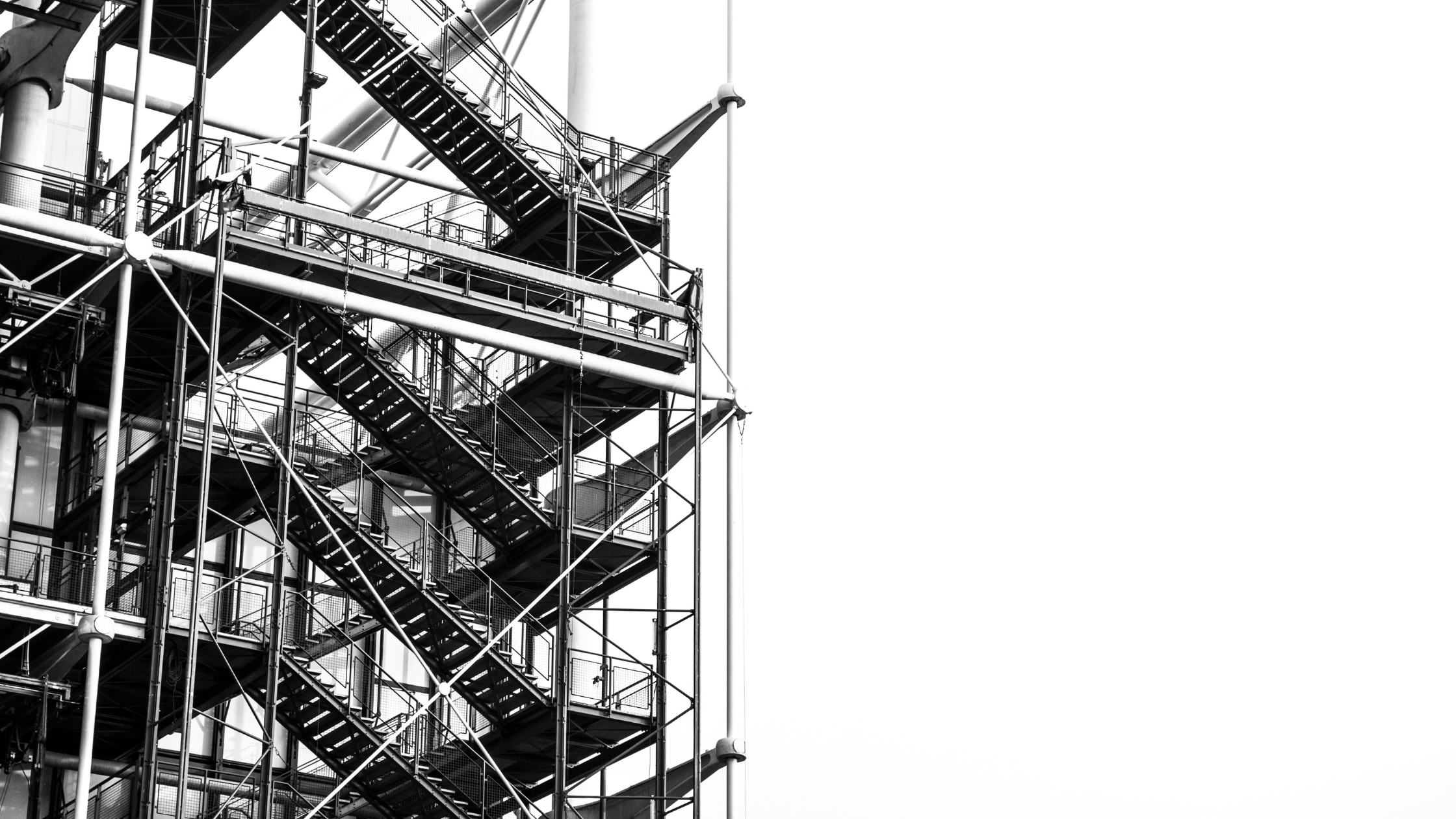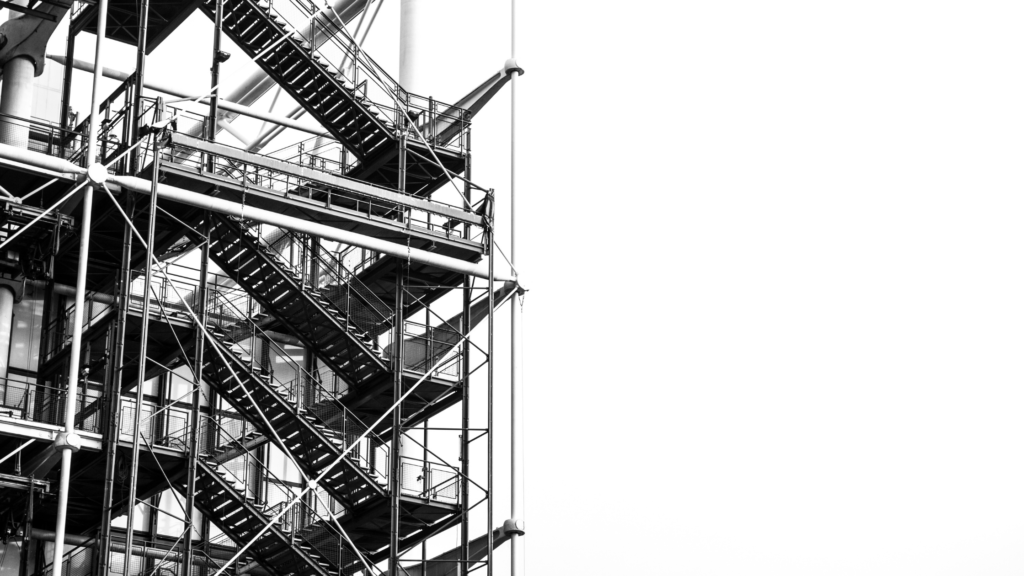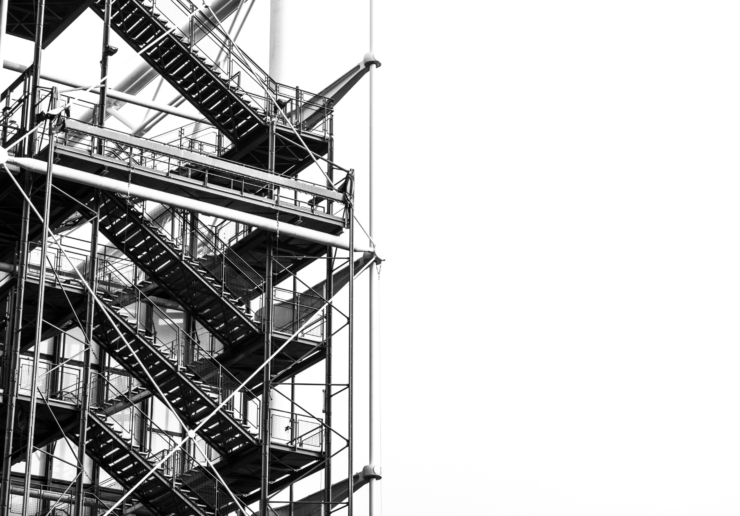
Structural fabrication refers to the cutting, bending, and assembling of steel to create different products. During structural steel fabrication, several pieces of steel are combined together to form different structures of predefined sizes and shapes intended for assembly into buildings, industrial equipment, tools, and various other final products.
What isn’t structural steel fabrication? It doesn’t mean any type of welding that strengthens or repairs steel. Steel fabrication is a special skill that requires experience transforming raw components into products that meet and exceed various standards and codes. Here is what goes into the fabrication of structural steel:
Kloeckner Metals is a full-line steel supplier and service center. Download our structural plate spec sheet to find out what Kloeckner Metals routinely stocks.
First, structural steel is cut by fabricators through sharing, sawing, or chiseling with different tools that include plasma torches, water jets, and laser cutters. This is just the first stage of structural steel fabrication that is typically done in a manufacturing facility that is closed and has abundant safety precautions in place to protect workers.
The second step to fabricating structural steel is to bend the alloy. Fabricators either hammer the steel manually or use machines. The decision on whether to do one or the other usually depends on how much repetitive bending the project requires. The more repetitive bending needed, the more likely the fabricator will rely on machinery.
The final step of creating a structure involves combining the different parts of steel together. This is also usually done by welding—the application of heat to the steel parts to slowly join them together—but the pieces can also be bound together with adhesives or rivet construction.
To shape the pieces of steel into a structure, fabricators use equipment and design software to supervise the project. Regardless of the industry, most steel sections are produced in the facility and only afterward assembled on-site.
While welding can be central to combining steel structures together, it also serves an important second function of making steel stronger.
If it wasn’t for welding and fabrication, we wouldn’t be able to rely on steel in high-pressure applications, for example, columns or I-beams in commercial buildings. Welding gives contractors a much safer way to connect beams without losing strength at the welded joints.
Even further, foundations and building modifications rely on successful welding for their success. Welding frequently replaces rivet construction because it is superior when it comes to the strength and durability it lends structures.
Improvements in welding techniques have gone further lately in allowing for higher complexity and more style in architectural designs—and the steel itself is stronger and more dependable than it ever was.
Not only is welded steel safer, but it is also cost-effective because it is easier and less time-intensive to mold projects together that are designed with welded steel. And, with arc welding processes, the weight of structural steel projects can be reduced by at least a third.
There are many benefits to incorporating structural steel in construction and other projects, but the products themselves can be complex and demand experienced structural steel fabrication teams to be successful.
Compared to other metal options, steel is stronger and cheaper. It offers more value in the range of fabrication industries where it is a staple.
In the construction and other industries, structural steel usually arrives in the pre-fabrication phase and is fabricated on-site. Pre-fabrications reduces how much work needs to be done on-site, fast-tracking projects.
Materials other than steel tend to be higher maintenance. For example, wood is vulnerable to bugs and can break down during corrosive weather conditions. Steel, meanwhile, is easily repaired and lasts a long time.
Put simply, steel looks great and can enhance the appearance of different projects regardless of the look required.
Steel is environmentally friendly because it can be endlessly reused and recycled. It also requires less energy to produce and generates less carbon dioxide.
Structural steel is very strong and weighs up to a third less than comparable metals.
Structural steel is malleable and can be customized to meet project specifications, especially with experienced welders and fabricators. Because structural steel is an alloy, its physical and mechanical properties can be adapted as needed.
You will find structural steel fabrication across the construction, manufacturing, automotive, shipbuilding, and other industries. Here are just a few:

In the manufacturing industry, structural steel is used to produce platforms, steel ladders, industrial stairs, mezzanines, steel handrails, and more.
In the construction industry, architects, engineers, and contractors default to structural steel and steel beams, steel plates, girders, and H-shaped steel sections all form parts of large fabricated sections.
The energy industries rely on fabricated structural steel in the form of transmission towers, wind turbines, pipelines, and oil and gas well platforms, among others.
Steel is a fixture of the mining industry and structural steel is part of mining infrastructure. Structural steel sections common in mining include fittings, pipes, grating, rods, beams, and rails.
The shipbuilding industry—comprised of ferries, recreational boats, and supertankers—is heavily reliant on structural steel fabrication.
Structural steel is used in various parts of aircraft.
Steel underpins the automotive industry and shows up in various parts, especially various safety features and the engine itself.
Kloeckner Metals is a full-line steel supplier and service center. Kloeckner Metals combines a strong national footprint with the latest fabrication and processing technologies and the most innovative customer service solutions.

Steel base plates are fundamental elements employed in various manufacturing...
Metal fabrication is a critical process that transforms raw metal...
The solar industry has undergone a significant transformation by incorporating...

X
The Kloeckner Metals website uses modern technologies. Unfortunately, your browser doesn't support those technologies.
Download the latest version of one of these browsers to experience the site: